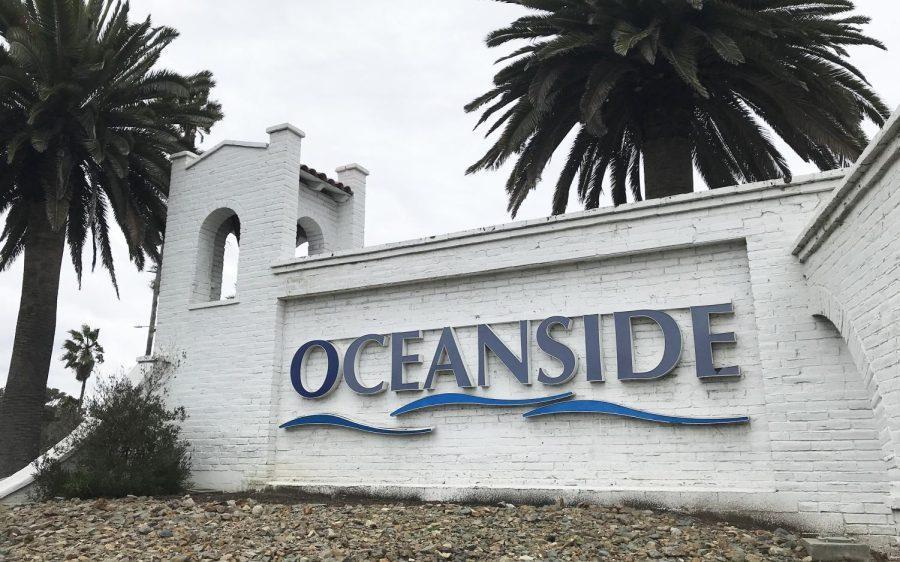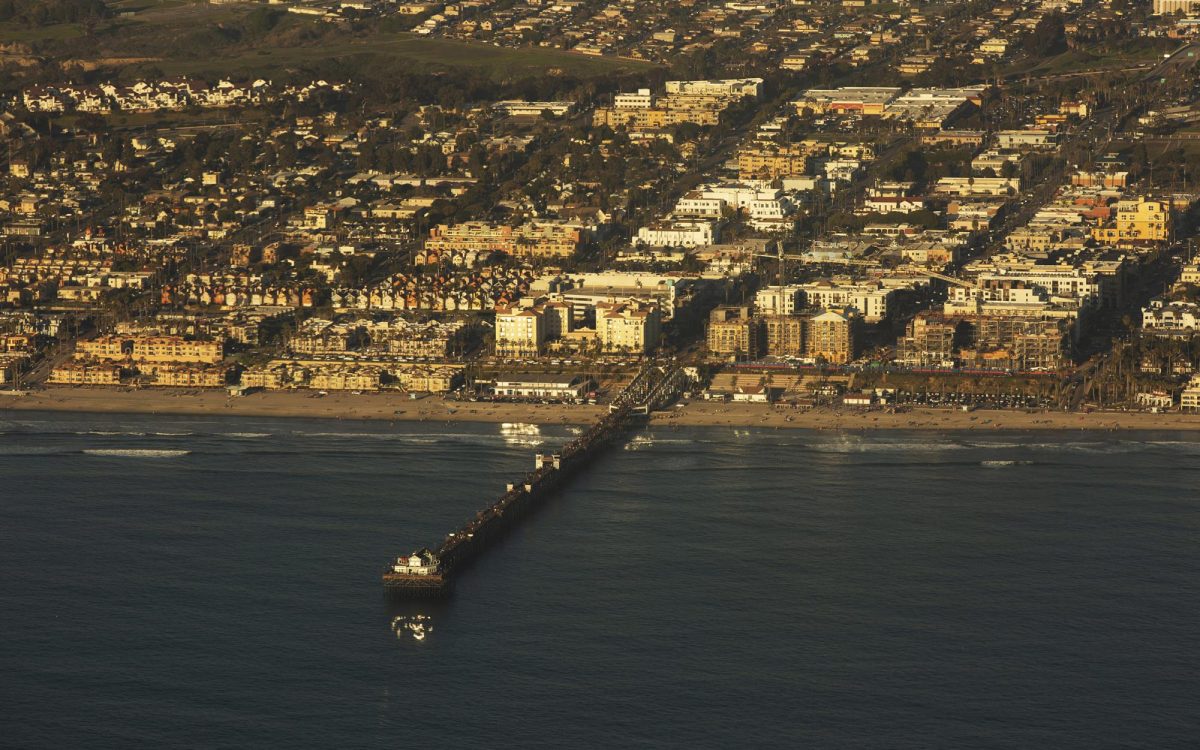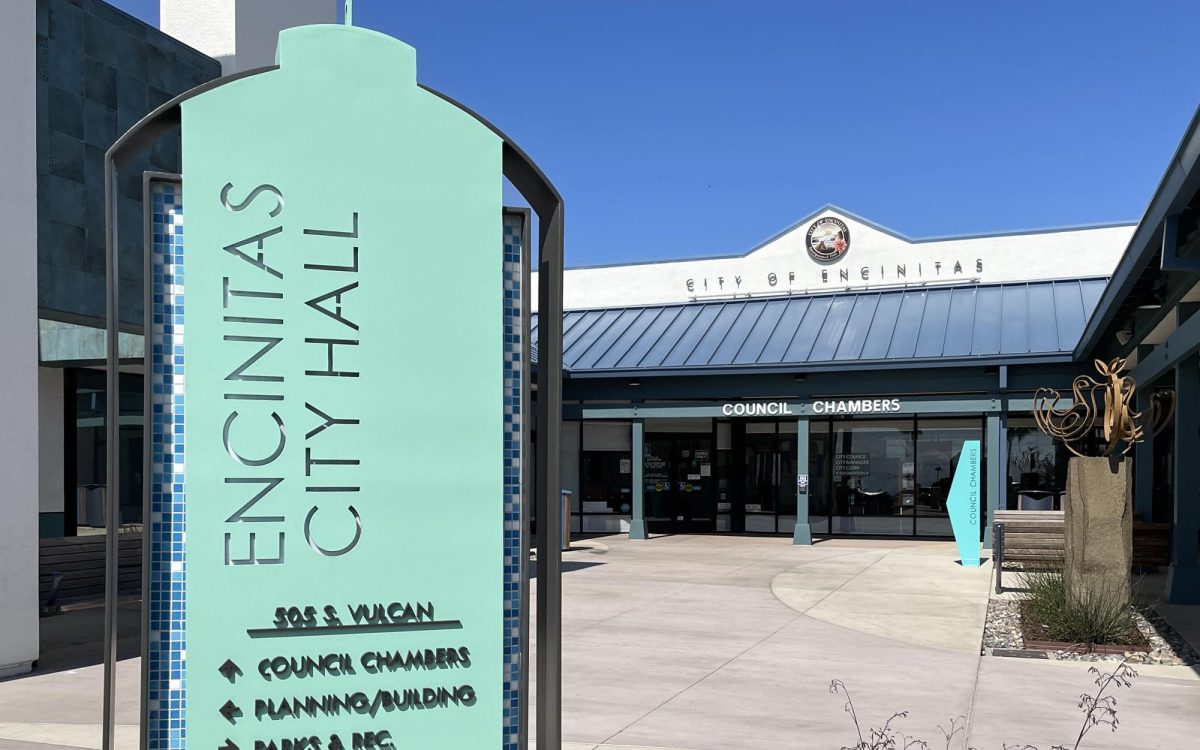City Report is a new monthly addition to OsideNews and the North Coast Current.
One theme dominated October’s Oceanside City Council meetings: Construction.
Downtown development has finally been limited by the council, undoing a 4-year-old policy change. Meanwhile, a controversial warehouse project has people upset over traffic problems, lack of transparency and possible environmental hazards.
Here’s the breakdown.
What’s going on downtown?
The City Council has limited downtown housing, capping density at 86 units per acre.
The council ruled 3-2 in favor of the cap, with council members Eric Joyce, Rick Robinson and Deputy Mayor Ryan Keim voting in favor and Mayor Esther Sanchez and Councilman Peter Weiss opposing.
The Oct. 18 ruling came after debates between the council and residents over a reasonable limit. Earlier in the month, density discussions divided the council, resulting in a failed 2-2 vote over a proposed 85-unit cap. Sanchez did not attend due to an illness.
Residents came to the Oct. 18 meeting largely in support of a cutoff, citing congested traffic and maintaining city character. Resident Joe Hill supported a lower cap, calling the pitched number “arbitrary.”
 “We should be looking somewhere around 50, to prevent a potential catastrophe downtown,” Hill said. “Maybe you’ll all do the right thing tonight, I hope so.”
“We should be looking somewhere around 50, to prevent a potential catastrophe downtown,” Hill said. “Maybe you’ll all do the right thing tonight, I hope so.”
But Hannah Gbeh, a representative of the San Diego County Building Industry Association, said the city needs more homes to combat the state’s housing crisis and rising cost of living.
“We want to build homes for the people in San Diego,” Gbeh said. “(They) are making a choice. Can I pay my rent? Can I buy my food? Can I pay for child care? The entire region of San Diego County, including Oceanside, is in a severe housing crisis.”
For many, this vote was a long time coming. State and local housing policies, on top of a 4-year-old City Council ruling, muddied the waters.
How we got here
In August 2019, the council lifted the downtown district’s density cap, going from 43 units per acre to unlimited density. Its hope was to incentivise cheaper housing, but California’s density bonus law and a local ordinance made things complicated.
To encourage more affordable housing, California has something called a Density Bonus Law. Basically, it allows developers to increase building density as long as a certain number of units are priced at below market rate. It’s aimed for low-income to senior residents with varying benefits offered to developers, depending on how many units they’re willing to drop the price for.
 If developers qualify, they can surpass local height requirements, gaining various incentives and concessions. This can include waivers for regulations like parking, height limits and setbacks. Local governments have different baselines for affordable housing. Oceanside’s inclusionary housing ordinance requires developers to allocate 10% for lower to moderate-income households.
If developers qualify, they can surpass local height requirements, gaining various incentives and concessions. This can include waivers for regulations like parking, height limits and setbacks. Local governments have different baselines for affordable housing. Oceanside’s inclusionary housing ordinance requires developers to allocate 10% for lower to moderate-income households.
This put the council in a difficult position. California’s current density bonus law makes denying affordable housing projects more difficult. This — on top of the lifted cap — has resulted in multiple high-density developments getting reluctant approval from the council.
In 2022, the council members approved an eight-story complex on Seagaze Drive, with a density of 321 units per acre. The council didn’t want to approve it, but it had to comply with state law. This seemed to be the straw that broke the camel’s back, because the council asked its staff to draft up a new housing cap.
The staff drafted an amendment, putting the limit at 100 units per acre, which has now officially dropped to 86. But the city still must abide by state density bonus law, meaning complexes can exceed the 86-unit cap if they qualify for a density bonus.
What is the Eddie Jones Project?
The Eddie Jones Project is a proposed warehouse described by the Oceanside Zoning Ordinance as a “wholesaling, distribution, and storage facility.” If approved, the warehouse would be located on Eddie Jones Way, close to the San Luis Rey River and Oceanside Municipal Airport.
The project is massive, measured at 566,905 square feet with 114 truck terminals, 590 parking spaces, 60 truck trailer parking stalls and other amenities. The warehouse would be built by RPG Development, a real estate company based in Encinitas.
So what’s the problem?
The project’s large scope has left residents worried about its impact. People flocked to the council’s Oct. 4 meeting, dressed in blue for solidarity.
“The traffic is one of our major concerns,” said Oceanside Resident Kim Stone. “We have over 1,200 homes north of the municipal airport and those homes are going to be severely impacted by the traffic that this is going to generate for us.”
Oceanside Speaks Out has been a vocal critic of the current project. Founded last July by local residents, its website states its mission to “preserve the quality of life in North Oceanside, California by advocating for responsible land use and development.”
“We want a development that works for the neighborhood, for the city, and for the development, because it’s all important,” said Darin Selnick, a member of OSO’s leadership team.
Concerned Oceanside residents have questioned who will use the warehouse, given the project’s large undertaking. According to RPG’s project website, no tenants have been selected. The site features an FAQ page that explains its plans for abiding by regulations and helping the surrounding community.
Selnick, however, views the tenant discussion as a “sidestep” from RPG.
“For example, if you build a shopping center, you don’t ask which tenants are there, but you know what the shopping center is going to be used for,” he said. “It’s going to have grocery stores, fast food, you know the types of tenants. (OSO) never asked for the exact tenant, we asked for the type of usage.”
Selnick says RPG has flip-flopped over the types of tenants they want to use, causing confusion for residents. OSO wants them to provide more transparency over the entire process.
RPG Development did not respond to immediate requests for comment.
What’s next?
Before the project can be voted on, the city requires an Environmental Impact Report to be submitted. The city listed possible hazards such as air quality and greenhouse gas emissions through its Notice of Preparation. While the exact date is unknown, the report is likely to be finished sometime this fall, followed by a public hearing. When the report is done, the Eddie Jones Project must get approval from the Planning Commission. If granted, it will finally hit the City Council’s desk for a vote.
Owen Pratt is a freelance writer in the region.






